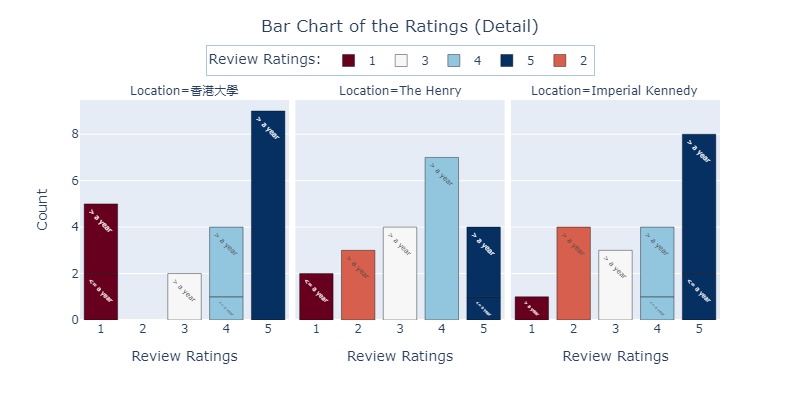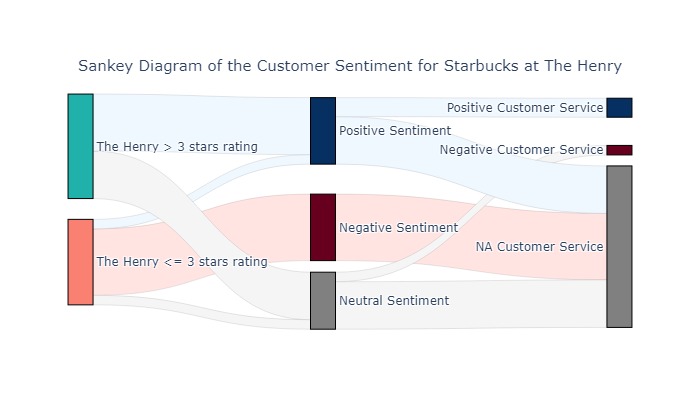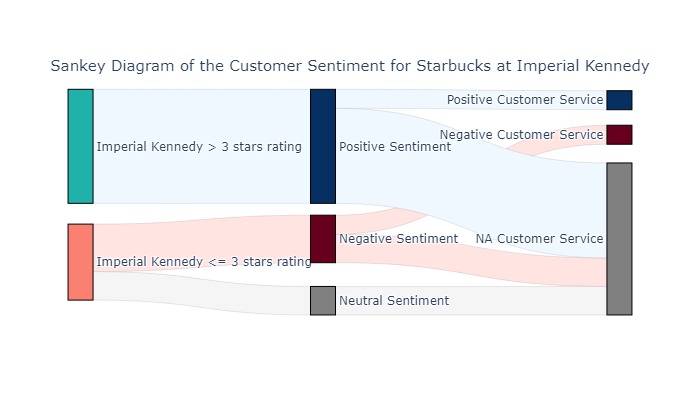Starbucks Google Maps Review Sentiment and Customer Satisfaction Analysis using ChatGPT
“It takes 20 years to build a reputation and five minutes to ruin it. If you think about that, you’ll do things differently.”
– Warren Buffet
Introduction
When we're trying to assess the customer experience at a business,
we often turn to review ratings as a quick and easy way to gauge customer satisfaction.
However, ratings alone don't always paint the full picture.
A high rating might suggest a satisfied customer,
but it doesn't tell us whether the customer had a positive or negative experience.
To get a more accurate understanding of the customer experience,
it's crucial to look at the content of their reviews and analyze the sentiment of their comments.
In this way, we can gain deeper insights into the nuances of customer experiences and identify specific areas for improvement.
Data Acquisition
The initial plan was to extract Google Maps reviews using the
Google Maps API
.
However, this approach had a limitation as it could only provide the top 5 reviews for each location.
To overcome this, Selenium and BeautifulSoup were used to scrape the Google Maps webpage,
allowing for the extraction of more than 5 reviews.
A list of Starbucks locations was obtained from the
Starbucks website
,
and the Google Maps API was used to automate the extraction of the Google Maps hyperlink for each Starbucks location.
Before scraping the reviews, the analysis was narrowed down to only the Starbucks location in the western district of Hong Kong Island.
The data extracted included review ratings, reviewer's data, and review content.
ChatGPT Model for Sentiment Analysis
To control the cost of the project,
the review data analyzed was limited to Starbucks locations in the western district of Hong Kong Island,
as ChatGPT models are
priced per 1000 tokens
.
The model used in this project was the GPT-3.5-turbo model through
OpenAI API
.
Despite the availability of GPT-4,
I decided on GPT-3.5-turbo as there wasn't a significant
difference in capability
between the two models and it is the most
cost-effective model
for the project.
This decision allowed the project to remain within budget while still achieving the desired results.
Analysis of Starbucks Review Ratings


Key Takeaways:
- The Starbucks stores in the western district generally have ratings above 3 stars, but a significant proportion of the ratings are unfavorable.
- For Starbucks at The Henry, nearly 50% of customers that visited the store had a negative experience, and the unfavorable reviews are distributed across 1 to 3-star ratings.
- For Starbucks at 香港大學, approximately 30% of customers had such negative experiences that they gave the lowest ratings possible (a 1-star rating).
Analysis of Starbucks Review Sentiment


Key Takeaways:
- There is a stark contrast between the review ratings and the review sentiment bar chart. The reviews with ratings above 3 stars are split nearly 50/50 between neutral and positive sentiment. Although the ratings are favorable, the sentiment of the reviews is generally neutral based on the review content.
- Regarding customer service, only a small proportion of negative sentiment reviews mentioned negative customer service experiences, but no positive comments were made about the customer service in the store.

- Similarly to Starbucks at 香港大學, a proportion of customers who gave favorable review ratings for the store at The Henry left a review with a generally neutral sentiment.
- Additionally, it is worth noting that some customers who gave unfavorable ratings left reviews with positive sentiments.
- Interestingly, none of the negative sentiment reviews mentioned customer experience. Further analysis would be needed to explore the complaints customers have regarding the store if they are not related to customer service.

- The Starbucks at Imperial Kennedy received the most reviews with positive sentiment, and the review ratings were consistent with the sentiment of the reviews, with all positive reviews having a rating above 3 stars.
- In contrast to the 香港大學 store, both The Henry and Imperial Kennedy locations had both positive and negative comments about customer service.

Emotions Expressed in Customer’s Reviews (Interactive Chart)
Key Takeaways:
Final Thoughts
The insights drawn from this project suggest that while review ratings can be a useful indicator, analyzing the review content provides a more nuanced understanding of customer sentiment and experiences. Additionally, the variance in customer experiences across different locations highlights the need for location-specific analysis and improvements. By identifying specific emotions expressed in the reviews, it may be possible to better understand the underlying experiences and address issues that contribute to negative emotions.
Next Stage of the Project
Further analysis of the customer reviews could reveal more specific insights into the experiences and opinions of customers at each location.
The next step would be to identify specifically what aspects of the store, customers appreciate and identify which areas besides customer service, needs improvements.